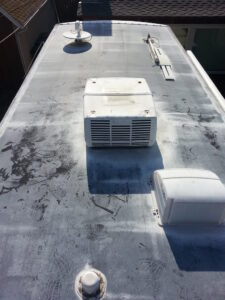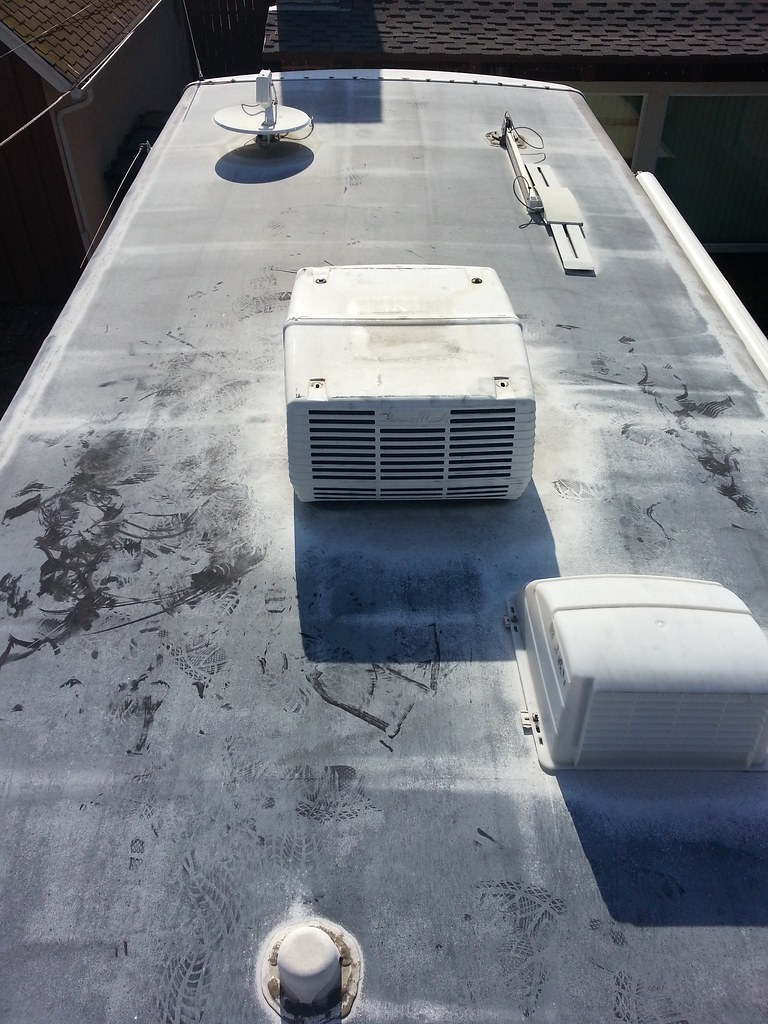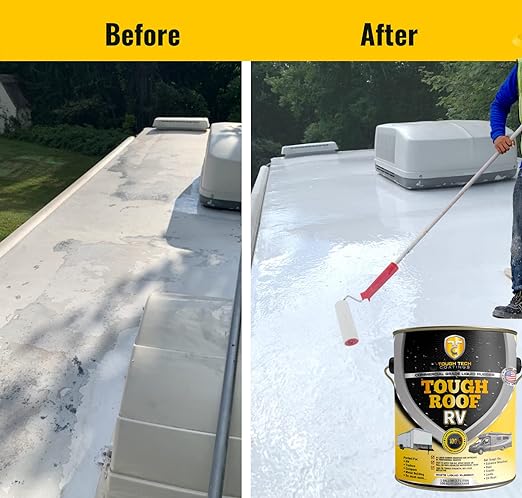If you are a new RV owner or considering purchasing one, understanding how to maintain your RV is crucial. One important aspect of RV maintenance is taking care of the roof, specifically the roof sealant. In this article, we will provide you with all the information you need to know about RV roof sealant – from what it is and why it’s important, to how to apply and maintain it. By the end of this article, you’ll be equipped with the knowledge to keep your RV roof protected and in excellent condition for years to come.

What is RV Roof Sealant?
RV roof sealant is a protective coating designed specifically for the roofs of recreational vehicles (RVs). It provides a waterproof barrier that helps to prevent leaks and damage caused by rain, snow, and other environmental factors. RV roof sealant is essential to ensuring the longevity and overall quality of your RV by protecting it from the elements.
Different Types of RV Roof Sealant
There are several types of RV roof sealants available on the market, each with its own unique properties and advantages. Here are some of the most common types of RV roof sealants:
Liquid Roof Sealant
Liquid roof sealant is a popular choice among RV owners due to its ease of application and effectiveness. This type of sealant is typically made of a liquid rubber material that forms a flexible and seamless barrier when it dries. It is ideal for flat or low-sloped RV roofs and can be applied using a roller or brush.
Acrylic Roof Sealant
Acrylic roof sealant is a versatile option that is known for its durability and weather resistance. It forms a protective layer that reflects sunlight, helping to regulate the temperature inside your RV. Acrylic sealants are available in both clear and colored varieties and can be applied with a brush or roller.
Silicone Roof Sealant
Silicone roof sealant is highly regarded for its excellent waterproofing capabilities. It forms a strong and flexible seal that can withstand extreme temperatures and UV exposure. Silicone sealants are typically clear in color and are applied using a caulking gun or trowel.
Butyl Tape Sealant
Butyl tape sealant is a self-adhesive sealing tape that is commonly used for sealing gaps, seams, and joints on RV roofs. It is made of a synthetic rubber material that remains pliable over time and provides reliable waterproofing. Butyl tape sealant is easy to apply and is a cost-effective option for smaller repairs or touch-ups.
How to Choose the Right RV Roof Sealant
Choosing the right RV roof sealant can be crucial to the overall effectiveness and longevity of your RV’s roof. Here are some factors to consider when selecting the appropriate sealant for your needs:
Roof Type
Different types of RV roofs may require specific types of sealants. For example, a rubber or TPO roof may require a sealant specifically formulated for those materials. Before purchasing a roof sealant, ensure that it is compatible with the type of roof your RV has.
Weather Conditions
Consider the climate and weather conditions in the areas you plan to travel with your RV. If you frequently encounter extreme temperatures, heavy rain, or intense sunlight, choose a sealant that is designed to withstand those conditions.
Application Method
Consider your comfort level and capabilities when it comes to applying the sealant. Some sealants require specialized tools or equipment, while others are simply applied with a brush or roller. Choose a sealant that suits your preferences and skill level.
Compatibility with Existing Roof
If you have previously applied a sealant or coating to your RV roof, be sure to select a sealant that is compatible with that existing material. Mixing incompatible sealants can result in poor adhesion and potential damage to your roof.
Budget
Consider your budget when selecting an RV roof sealant. While it’s important to invest in a high-quality sealant, there are options available at various price points. Compare prices and consider the long-term benefits of the sealant before making a decision.

How to Apply RV Roof Sealant
Applying RV roof sealant is a straightforward process, but proper preparation and application are essential to ensure the best results. Here is a step-by-step guide on how to apply RV roof sealant:
Preparation
- Clean the Roof: Before applying sealant, thoroughly clean the RV roof to remove any dirt, debris, or loose material. Use a mild detergent and scrub brush or pressure washer to ensure a clean surface.
- Inspect for Damage: Carefully inspect the roof for any signs of damage, such as cracks, punctures, or loose seams. Repair any existing issues before applying the sealant to ensure proper protection.
Application Process
- Choose a Suitable Weather Window: Check the weather forecast and choose a day with clear skies and mild temperatures. Avoid applying sealant during rainy or excessively hot conditions, as it may affect the curing process.
- Prepare the Sealant: Follow the manufacturer’s instructions to prepare the sealant for application. This may involve mixing, shaking, or priming the sealant, depending on the product.
- Apply the Sealant: Using a brush, roller, caulking gun, or trowel (depending on the type of sealant), apply a smooth and even layer of sealant to the entire RV roof. Pay special attention to seams, joints, and areas prone to leaks.
- Ensure Proper Coverage: Make sure the sealant is evenly spread and covers the entire roof surface. Double-check for any missed spots or thin areas and apply additional sealant if necessary.
Maintenance and Repair
Regular maintenance and repair of your RV roof sealant are essential to keep your roof in optimal condition. Here are some tips for maintaining and repairing your RV roof sealant:
Regular Inspections
Perform regular inspections of your RV roof to identify any issues that may require repair. Inspect the roof at least twice a year, and after severe weather events. Look for cracks, punctures, or signs of water damage.
Check for Cracks or Punctures
Inspect the sealant for any cracks or punctures that may have developed over time. These can allow water to seep into the roof and cause damage. If you notice any cracks or punctures, promptly repair them using the appropriate sealant.
Look for Signs of Water Damage
Check for any signs of water damage on the interior of your RV, such as water stains or mold growth. These may indicate a leak in the roof sealant. If you notice any signs of water damage, address the issue immediately to prevent further damage.
Inspect Seams and Joints
Pay special attention to the seams and joints on your RV roof, as these areas are prone to leaks. Look for any signs of separation or damage and repair them as needed. Applying an additional layer of sealant to these areas can provide added protection.

Conclusion
RV roof sealant is a vital component of maintaining and protecting your RV’s roof. By choosing the right sealant for your needs and properly applying it, you can prevent leaks and prolong the lifespan of your RV. Regular inspections and prompt repairs are crucial to ensure the ongoing effectiveness of the sealant. By following these guidelines, you can enjoy your RV adventures with the peace of mind that your roof is well-protected.


